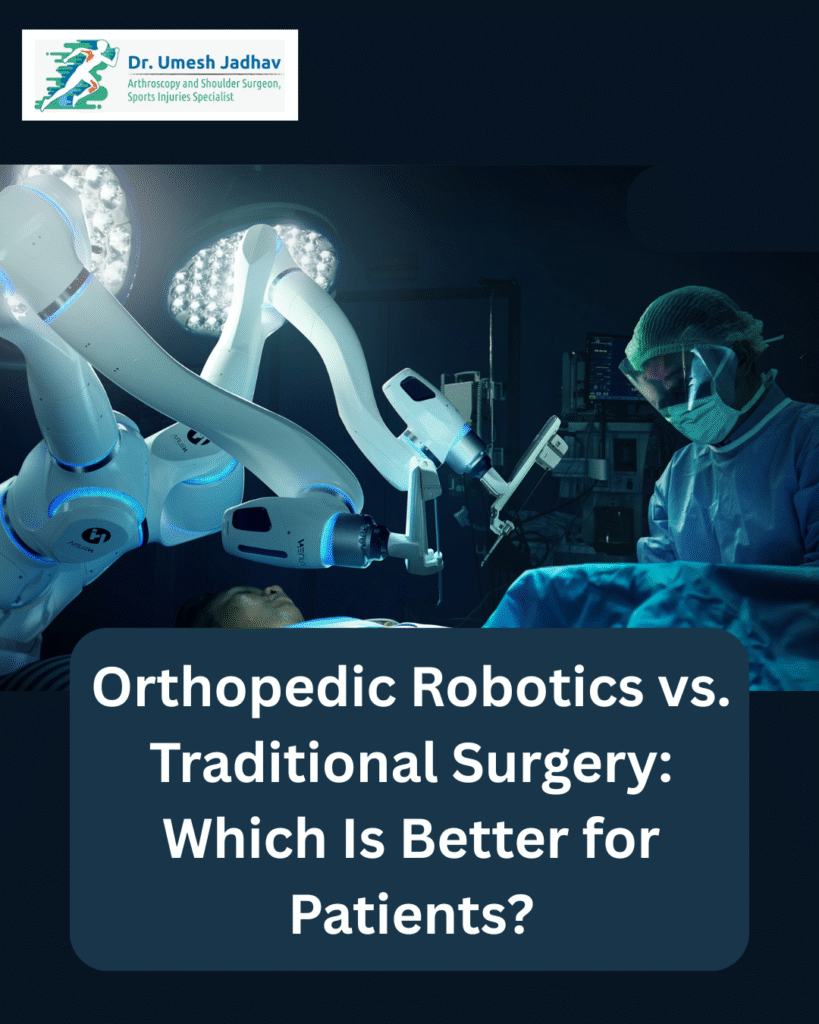In recent years, orthopedic surgery has undergone a remarkable transformation with the rise of robot-assisted procedures. Hospitals and surgical centers now proudly promote robotic joint replacement and robotic orthopedic surgery as the best solutions that promise improved accuracy, faster recovery, and less post-operative discomfort. These advancements have generated a lot of excitement — and a fair amount of questions.
But while robotics sounds impressive, it’s important to remember that traditional orthopedic surgery has been practiced and perfected for decades, delivering successful outcomes for millions of patients worldwide. Skilled orthopedic surgeons have long relied on their expertise, experience, and advanced manual techniques to repair joints, treat fractures, and restore mobility.
So, when choosing between robotic surgery and traditional orthopedic surgery, what factors should you consider? How do the results, recovery times, risks, and costs compare? And most importantly — which approach truly works better for you as a patient? Understanding these differences can help you make an informed decision with your orthopedic specialist.
What Is Robotic Orthopedic Surgery?
Robotic orthopedic surgery uses computer-assisted tools and robotic arms to help surgeons perform precise cuts and implant placement. The technology can map a patient’s joint in 3D and guide the procedure based on a pre-set plan.
Benefits often highlighted:
-
High accuracy in implant positioning
-
Less tissue damage
-
Potentially quicker recovery in some cases
What Is Traditional Orthopedic Surgery?
Traditional orthopedic surgery is performed entirely by the surgeon’s skill, experience, and hands-on expertise. It may involve advanced imaging and planning tools, but the execution is manual. This approach has been trusted for decades in knee replacement, hip replacement, fracture fixation, and other orthopedic procedures.
Advantages include:
-
Relies on the surgeon’s expertise and judgment during surgery
-
Well-tested methods with proven long-term results
-
Suitable for a wide variety of patient cases, including complex ones
Comparing Robotic and Traditional Orthopedic Surgery
| Feature | Robotic Surgery | Traditional Surgery |
|---|---|---|
| Precision | High, guided by software | High, based on surgeon’s skill |
| Cost | Usually higher | More affordable |
| Technology Dependence | Fully dependent on robotics | Independent of machines |
| Availability | Limited to certain centers | Widely available |
| Track Record | Short-term data available | Long history of success |
What Patients Should Consider
When choosing between robotic and traditional orthopedic surgery, think about:
-
Your budget and insurance coverage
-
The availability of technology in your city
-
The surgeon’s experience with either method
-
Your overall health condition and complexity of the case
Remember — even the most advanced technology cannot replace the decision-making, adaptability, and experience of a skilled orthopedic surgeon.
The Bottom Line
While robotic orthopedic surgery is an exciting advancement, traditional orthopedic surgery remains a safe, effective, and trusted choice for most patients. The success of your treatment depends far more on the surgeon’s skill and judgment than on the equipment used.
If you are considering knee replacement, hip replacement, fracture repair, or other orthopedic procedures in PCMC, Nigdi, or Pune, consult Dr. Umesh Jadhav, an experienced orthopedic surgeon known for his hands-on expertise, precision, and patient-focused care.
Book an appointment today to discuss the best surgical option for your needs.

